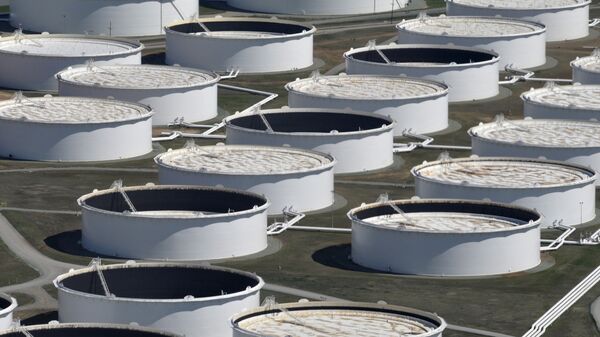On Sunday, OPEC+ signed a landmark deal that commits member nations to reduce crude oil production by 9.7 million barrels per day in May and June. Thereafter, production will be cut by 7.7 million barrels per day until the end of 2020, and by 5.8 million barrels daily from January 2021 until April 2022.
Over the last two months, prices for black gold have dropped from around $59 to $22 per barrel of Brent. Last week, they bounced back to $32 per barrel.
Experts have shared their views on why there was no instant growth in oil prices following the historic deal, and whether it depends on new oil production conditions.
Nobody Expected a Leap
Rustam Tankaev, a member of the Committee on Energy Strategy and Development of the Fuel and Energy Complex of the Chamber of Commerce and Industry of the Russian Federation, pointed out that no one had expected oil prices to jump to pre-crisis levels.
"It’s almost impossible to determine the drop in global market demand in the current conditions. There are several estimates and forecasts; OPEC gives the minimum. Actually, oil-producing countries have now turned to this reduction. But it may require reducing it not only by 10 million barrels per day, but also by 20, and even by 35. That is, from the perspective of market participants, the decision was too weak", he said.
Everyone Will Have to Reduce
For his part, Muhammad Surur al-Sabban, a Saudi oil expert, believes that oil prices will start rising only when all oil-producing countries reduce production, not just those that have entered the new OPEC+ deal.
"Let’s hope that countries that didn’t participate in the deal will also reduce production; first of all, the US and Canada. If they cut production by at least five million barrels per day, oil prices will start growing slightly. If this doesn’t happen, prices will continue to fall, as we saw on Monday morning", he said.
Speaking about countries that weren’t included in the deal, the Saudi expert added:
"I’m sure that the oil exporting countries that have remained outside the OPEC+ deal also understand their responsibility for the global oil market: they will also have to take part in saving it. Due to domestic law, the United States and Canada cannot participate in the OPEC+ deal. But they can cut oil production in accordance with the needs of the market. Although in this context it would be worth considering a temporary freeze on the internal ban on participation in cartels".
Current Prices Are Payback for Past Years
At the same time, Alexei Zubets, head of the Institute of Social and Economic Research at the Financial University under the Government of the Russian Federation, believes that the market is now paying for the incredible oil boom of a decade ago, when oil prices exceeded $100 per barrel. Manufacturers, in his opinion, abused it.
"Oil producers are paying for those huge resources that were pumped into production capacities between 2010 and 2014, when prices were steady above $100. High oil prices launched investment projects that have created new capacities. If all countries had kept prices at a lower level, this wouldn’t have happened. Now it will take several years to remove excess oil production capacities from the market", he said.
Price Forecasts
The experts agree that the short-term prospect of rising oil prices is very disappointing. However, starting in June, the situation will be improving; but prices will be lower than desired.
However, Muhammad As-Sabban is slightly less optimistic, but he believes that there will still be growth.
"I think that in the near future prices won’t increase much. Oil demand will be low due to the actual stoppage of the global economy, especially in the second quarter. Prices are likely to start growing only after production and the global economy start to recover, returning to the standard work schedule. Until the quarantine ends completely, oil prices won’t exceed $30 per barrel", the expert concluded.


